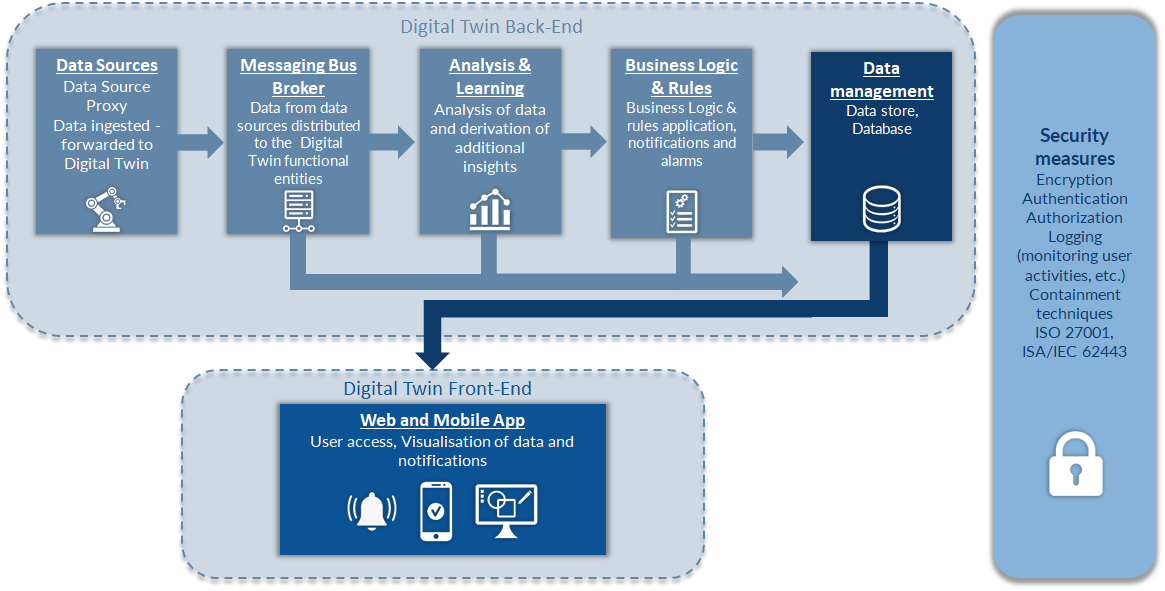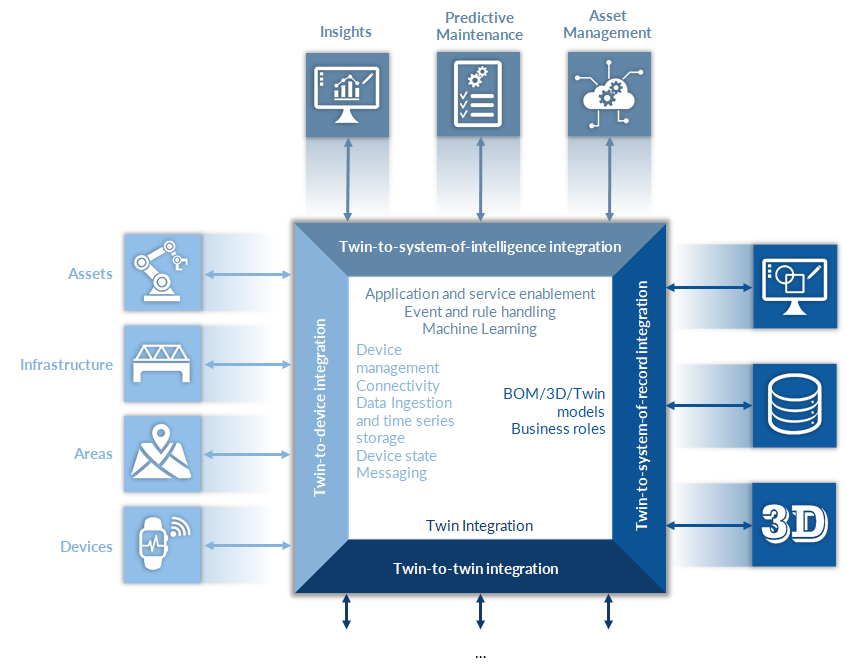WHAT IS A DIGITAL TWIN?
A Digital Twin is a virtual representation of a physical element, asset or system where real time data connections enable the physical and virtual states to be continuously synchronized. This allows Digital Twins to be used to:
• better understand past and current performance of an asset or system and generate insights that help predict and optimize current and future performance and be proactive about maintenance thus reducing down-time.
• simulate interventions before these are deployed in the real world, perform what-if analyses and make informed decisions, from short-term early warning and emergency response to longer-term system risk assessment and management.
MAIN diTTo TECHNOLOGIES
To handle the diversity of data sources (virtual/real devices, assets and knowledge elements) diTTo Digital Twins incorporate mechanisms to manage data acquisition in real time. The aim is not only to retrieve data from devices but to also aggregate information from any other systems and data sources available. Data Sources interface with the rest of the components via a Data source proxy and an appropriate Communication Application Programming Interface (API). A Messaging Bus Broker manages the information flows in real-time utilising the data published from the diverse data sources, to be consumed by domain-specific applications.

The Data Management functionality addresses cleaning and denoising the data coming from the data sources. The pre-processed are be stored in appropriate Data Stores. Data store management mechanisms are engaged for storing all received data, both processed and raw and subscribe to every topic of the Messaging Bus Broker. Analysis and Learning is used for post-processing and further analysis of the “cold” (non-real time data) as well as the processing and analysis of real time data in order to calculate the operative KPIs for corresponding asset/system. The calculated KPIs are then also be stored in the Data Store(s) to be used for further analysis, decision making using different algorithms including Artificial Intelligence (AI) ones. Finally, the Digital Twin comprises visualisation mechanisms and a graphical user interface allowing the user to view valuable insights and interact with the Digital Twin based on user requirements.
diTTo'S BUSINESS ENVIRONMENT
Operationalization of DT concept development (water & infrastructure)
- Design and delivery of the platform architecture
- Design, Realization, Maintenance, Management and bespoke applications development
Custom solutions for the 4 DT interfaces:
- The Twin-to-Device integration: Design and implementation of transparent and secure data collection, transmission and (initial) analysis systems (e.g. computations on the edge)
- The Twin-to-Intelligence integration: Data analytics, modelling and scenario planning
- The Twin-to-ICT System integration: Linking to in-house data stored in several legacy systems (GIS, CAD, SCADA, etc.) to create a common operational picture
- The Twin-to-Twin integration: linking up with other DTs

WHAT DOES diTTo ENGAGE WITH?

- diTTo provides the conceptual framework and expert advice for organizations to design, develop and operationalize a Digital Twin.
- diTTo designs and deploys a flexible and reusable DT platform that is tailored for different contexts and clients (organizationally, technologically, operationally).
- diTTo develops applications (intelligence) in terms of models and analytics (e.g. machine learning algorithms), builds new niche tools or makes them available and operational alone or in collaboration with external partners. These applications operate on top and benefit from the diTTos DT system approach.
- diTTo designs and delivers data management systems that connect sensors (and other IoT solutions) from the field to the DT solution. Sensor selection and placement needs to happen by domain experts – in collaboration with diTTo in terms of getting data into the DT.
- diTTo helps to establish the connection between the DT System on the one hand and the client’s legacy IT systems on the other. Is, if desired, helpful in introducing suitable Enterprise IT from the market.
- diTTo plays a role in connecting domain-specific DTs together (e.g. in a smart city context)
FROM PHYSICAL TO DIGITAL: THE diTTo APPROACH

